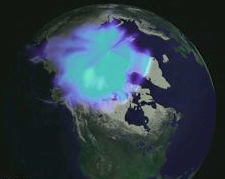
April 20, 2000 Greenbelt, Maryland - This winter, NASA and a European Commission sent two NASA research aircraft up to 70,000 feet above northern Sweden to measure gasses in the upper atmosphere. The specific concern was ozone levels. The stratosphere was much colder than normal this winter which makes ozone deterioration worse. And even though satellites and ground instruments monitor the atmosphere, there hadn't been direct measurement by instruments on a high flying plane since 1992. The result? More than 60 percent of the Arctic ozone at 11 miles above the North Polar region had been depleted.
Click here to subscribe and get instant access to read this report.
Click here to check your existing subscription status.
Existing members, login below:
© 1998 - 2025 by Linda Moulton Howe.
All Rights Reserved.

